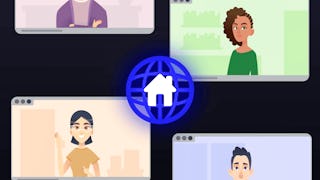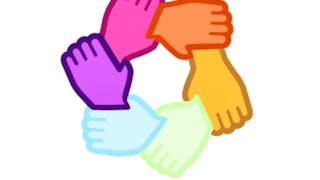The modern workplace is more diverse than ever, encompassing varied generations, cultures, and work environments (remote, hybrid, in-person). This course addresses the critical need for effective communication strategies in this dynamic landscape. You will learn to identify and adapt your communication style to enhance team productivity and build stronger connections with colleagues from all backgrounds.



Communication in the 21st Century Workplace
This course is part of Career Success Specialization

Instructor: Diane Spiegel
141,359 already enrolled
Included with
(3,892 reviews)
What you'll learn
Identify communication benefits across diverse work environments (in-person, virtual, hybrid).
Discuss effective techniques for communicating with a diverse workforce.
Differentiate communication preferences across five working generations.
Implement a flexing communication strategy for improved workplace team communication.
Skills you'll gain
Details to know

Add to your LinkedIn profile
4 assignments
See how employees at top companies are mastering in-demand skills

Build your subject-matter expertise
- Learn new concepts from industry experts
- Gain a foundational understanding of a subject or tool
- Develop job-relevant skills with hands-on projects
- Earn a shareable career certificate

There are 4 modules in this course
Welcome to Communication in the 21st Century Workplace! In this foundational module, you'll discover your unique communication style and preferences. Understanding how you 'show up' in the workplace is the first step to becoming a more effective communicator in our rapidly changing world. We'll explore how your energy, information intake, decision-making, and pace preferences shape your interactions. Through activities and knowledge checks, you'll reflect on individual styles and identify methods to enhance your communication. Focus on self-reflection to maximize your learning.
What's included
1 video10 readings1 assignment1 discussion prompt
Welcome to this module! The 21st-century workplace is shaped by many factors, from technology to remote work and an increasingly diverse workforce. Here, you'll explore these communication change drivers, focusing on how changing demographics impact workplace communication. You'll learn to differentiate between working generations and identify communication benefits across various work environments. To succeed, consider how these global shifts affect your daily interactions.
What's included
1 video6 readings1 assignment1 discussion prompt
In this module, you'll master the art of 'flexing communication' – tailoring your messages for clarity and impact. Building on your understanding of personal styles, you'll learn to adapt to others, fostering more effective communication and collaboration within your workplace team. Through discussion and knowledge checks, you'll implement a flexing communication strategy, recognize its benefits, and recall key improvement strategies. Practice adapting your messages to see immediate results.
What's included
1 video9 readings1 assignment1 discussion prompt
Discover the A.B.I.D.E. model, a powerful framework for clear, flexible communication and collaboration in the 21st century. This module introduces five key behaviors designed to provide ongoing support and guidance for your workplace communication. You'll discuss how specific A.B.I.D.E. elements can improve your current team's communication. In our final knowledge check, you'll name each element and articulate how this model enhances overall communication. Apply these behaviors to transform your team interactions.
What's included
1 video8 readings1 assignment1 discussion prompt
Earn a career certificate
Add this credential to your LinkedIn profile, resume, or CV. Share it on social media and in your performance review.
Instructor

Offered by
Explore more from Business Essentials
 Status: Free Trial
Status: Free Trial Status: Free Trial
Status: Free TrialUniversity of California, Irvine
 Status: Free Trial
Status: Free TrialNational University of Singapore
 Status: Free Trial
Status: Free TrialUniversity of Colorado System
Why people choose Coursera for their career




Learner reviews
3,892 reviews
- 5 stars
69.44%
- 4 stars
20.28%
- 3 stars
6.52%
- 2 stars
2.20%
- 1 star
1.54%
Showing 3 of 3892
Reviewed on Oct 9, 2015
Good course. It will help both managers as well as direct reports to find a common interface for better communication, and more efficient business relationships.
Reviewed on Jun 23, 2022
Good course. COuld use some more concise wording and better definitions of terms such as "buying habits" and flexing communication. Some parts are just a bit confusing for no reason.
Reviewed on Jan 31, 2016
The content of the course was good. Lectures were effective. I specially liked the last statement after every lecture "where ever you may be have a great time"

Open new doors with Coursera Plus
Unlimited access to 10,000+ world-class courses, hands-on projects, and job-ready certificate programs - all included in your subscription
Advance your career with an online degree
Earn a degree from world-class universities - 100% online
Join over 3,400 global companies that choose Coursera for Business
Upskill your employees to excel in the digital economy
Frequently asked questions
Effective communication in the modern workplace involves adapting your style to diverse teams, understanding generational preferences, and leveraging digital tools for clarity. This course provides strategies to enhance your communication skills for improved collaboration and productivity.
Diversity significantly impacts communication by introducing varied perspectives, cultural norms, and preferences. This course teaches you to recognize these differences and implement inclusive communication strategies to build stronger connections across a diverse workforce.
You will gain essential communication skills such as identifying your own style, adapting to others' preferences, facilitating discussions, and implementing strategies for effective team communication in various work environments.
More questions
Financial aid available,

